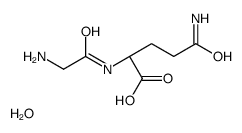Ammonium accumulation in commercially available embryo culture media and protein supplements during storage at 2-8°C and during incubation at 37°C.
Sander H M Kleijkers, Aafke P A van Montfoort, Otto Bekers, Edith Coonen, Josien G Derhaag, Johannes L H Evers, John C M Dumoulin
文献索引:Hum. Reprod. 31(6) , 1192-9, (2016)
全文:HTML全文
摘要
Does ammonium accumulate in commercially available culture media and protein supplements used for in vitro development of human pre-implantation embryos during storage and incubation?Ammonium accumulates in ready-to-use in vitro fertilization (IVF) culture media during storage at 2-8°C and in ready-to-use IVF culture media and protein supplements during incubation at 37°C.Both animal and human studies have shown that the presence of ammonium in culture medium has detrimental effects on embryonic development and pregnancy rate. It is, therefore, important to assess the amount of ammonium accumulation in ready-to-use IVF culture media under conditions that are common in daily practice.Ammonium accumulation was investigated in 15 ready-to-use media, 11 protein-free media and 8 protein supplements.Ammonium was measured by the use of an enzymatic method with glutamate dehydrogenase. To simulate the storage and incubation conditions during IVF treatments, ammonium concentrations were measured at different time-points during storage at 2-8°C for 6 weeks and during incubation at 37°C for 4 days.All ready-to-use, i.e. protein supplemented, culture media showed ammonium accumulation during storage for 6 weeks (ranging from 9.2 to 99.8 µM) and during incubation for 4 days (ranging from 8.4 to 138.6 µM), resulting in levels that might affect embryo development. The protein supplements also showed ammonium accumulation, while the culture media without protein supplementation did not. The main sources of ammonium buildup in ready-to-use culture media were unstable glutamine and the protein supplements. No additional ammonium buildup was found during incubation when using an oil overlay or with the presence of an embryo in the culture droplet.In addition to the unstable glutamine and the protein supplements, other free amino acids might contribute to the ammonium buildup. We did not investigate the deterioration of other components in the media.Break-down of components into ammonium is more pronounced during incubation at 37°C, however, it is not negligible during storage at 2-8°C. This results in increasing ammonium levels in culture media over time that may affect embryo development. Therefore, it is important that the use of free l-glutamine in human embryo culture media is stopped and that the use of protein supplements is thoroughly evaluated.No funding or no competing interests declared.Not applicable.© The Author 2016. Published by Oxford University Press on behalf of the European Society of Human Reproduction and Embryology. All rights reserved. For Permissions, please email: journals.permissions@oup.com.
相关化合物
| 结构式 | 名称/CAS号 | 分子式 | 全部文献 |
|---|---|---|---|
 |
甘氨酰-L-谷氨酰胺
CAS:172669-64-6 |
C7H15N3O5 |
|
Influence of two glutamine-containing dipeptides on growth o...
1988-07-01 [In Vitro Cell. Dev. Biol. 24 , 696, (1988)] |
|
Glutamine-based dipeptides are utilized in mammalian cell cu...
1994-11-15 [J. Biotechnol. 37(3) , 277-90, (1994)] |
|
Glycyl glutamine, an inhibitory neuropeptide derived from be...
1983-01-01 [Nature 306 , 267, (1983)] |
|
Glycyl-L-glutamine, a precursor, and glycyl-L-glutamic acid,...
1985-08-01 [Proc. Natl. Acad. Sci. U. S. A. 82 , 5213, (1985)] |
|
Parish, D.C. and Smyth, D.G.
[Biochem. Soc. Trans. 10 , 221, (1982)] |